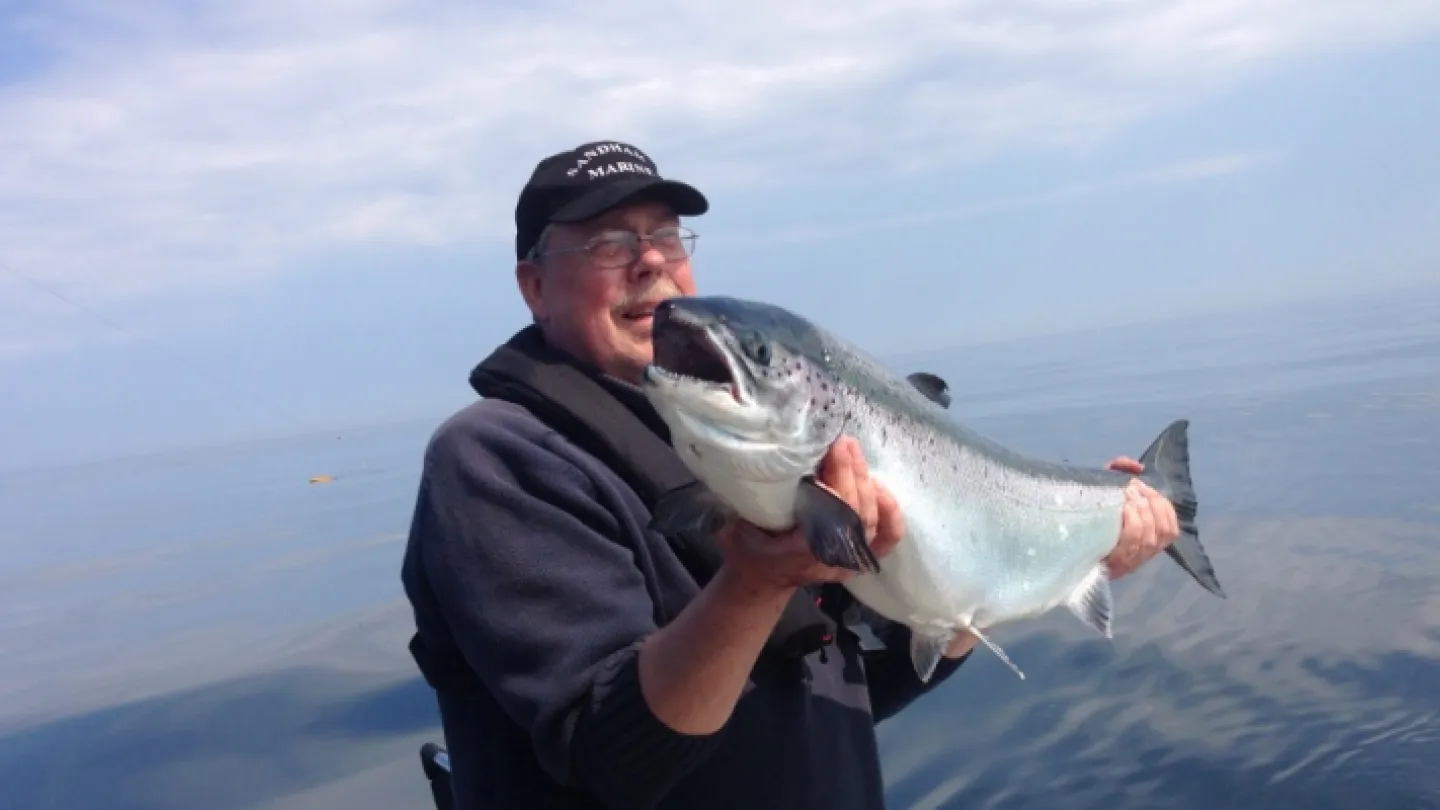Karlskrona has risen like a rocket in trolling for salmon. The numbers of salmon that eats up outside the island barriers are increasing every year as a result of better fisheries management.

Trolling for salmon
Sure you can catch salmon by fishing rod, both spin and fly, along some of the rivers in Blekinge, but to have a really good chance to catch the open waters undisputed king you can get in contact with the best professionals. This investment will be an experience that follows you the rest of your life. An effective trolling requires a strong and effective boat, a skilled and experienced crew and first class fishing gear.
More about salmon trolling:
Since commercial fishing for salmon off our coast has been banned, salmon have now increased in number to almost fantastic proportions.
Salmon fishing is usually carried out as trolling, which means that after boat you troll (drag) light trolling spoons from one or more rods partly at the side of the boat, partly under the boat on so-called deep rigs. The task of the deep rigs is to use a lead weight to help lower the bait to a depth you would not otherwise be able to fish on. Trolling after fishing kayaks has also been tested successfully, which gives a new and fresh element to the picture of ways to fish from a boat for salmon.
In the spring, it is common to use paravanes that are also called sledges or plainer boards. The paravans' task is to spread the bait on both sides of the boat and thus make it possible to fish with several rods and with a large width. It is quite common to have around 10 rods at the same time, but even up to 14 rods are common.
In the spring, the so-called hiking fishing is completely world-class. Hiking fishing is the name of the fishing that is conducted on the salmon that go into Hanö Bay in the spring to eat fat on the herring that goes in to play at night in shallower water closer to land. When they have eaten enough fat, the larger salmon begin to physically change their appearance, among other things by the male salmon getting a hook beak on the lower jaw and the scales are harder to better protect the fish before rising in shallow rapids to the playgrounds. The muscles get ready to sometimes hike all the way up to, for example, Torneåälv and get through through rapid rapids. It is no wonder that the salmon thus becomes a huge opponent in speed and power if you manage to get it on the hook during a trolling trip. These so-called wader salmon are counted by most as the king among Swedish sport fish as they are not only large but also incredibly strong. Getting the chance to drill such a fish can sometimes be the highlight of a sport angler's career.
During the spring, the salmon grow the fastest as their well-being temperature is about 8-12 degrees, which means that it is then fished both deep and shallow. During the autumn, on the other hand, almost all trolling is carried out with deep rigs as the salmon avoids the warmer surface water and goes deeper where it is cooler and more pleasant to stay.
Trolling fishing will increase sharply in the next few years as the opportunities for catching have significantly improved since restrictions have allowed salmon to survive to a greater extent and thus be able to reproduce.
In addition to the fact that commercial fishing can no longer engage in either drift nets or driveline fishing, sport fishing has also been given guidelines that you may only catch farmed salmon that has been finely cut (the fat fin is cut off on farmed salmon before it is released). Regardless of size, a wild salmon must be released quickly and carefully. In order to be approved, the salmon must also be at least 60 cm and a sea trout at least 50 cm.
Text: Uffe Johansson, Sandhamn Marine
